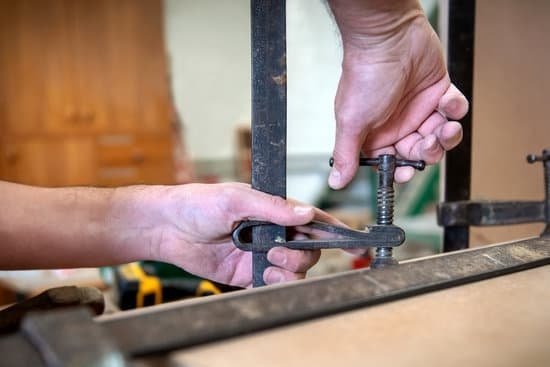Are you looking to enhance your woodworking projects? One crucial factor to consider is how to choose woodworking bandsaw blades. The right bandsaw blade can make all the difference in the quality and precision of your cuts, as well as the overall efficiency of your woodworking tasks.
When it comes to woodworking, selecting the appropriate bandsaw blade is essential for achieving optimal results. From resawing to intricate fine detail work, different types of projects require different types of bandsaw blades. Understanding the various factors involved in choosing the right bandsaw blade can help you achieve greater success and efficiency in your woodworking endeavors.
In this article, we will explore the importance of choosing the right bandsaw blade for woodworking projects. We will also discuss the different types of bandsaw blades available, as well as factors to consider when making your selection. Additionally, we will provide tips for extending the lifespan of your bandsaw blades through proper maintenance and care. If you are looking to optimize your woodworking experience, understanding how to choose woodworking bandsaw blades is a crucial first step.
Understanding the Different Types of Bandsaw Blades
When it comes to choosing the right bandsaw blade for your woodworking projects, understanding the different types of bandsaw blades is crucial. From the width of the blade to the number of teeth per inch (TPI), each factor plays a significant role in determining the performance and quality of cuts.
The first thing to consider when choosing a bandsaw blade is the width. The width of the blade will determine its ability to cut curves and make intricate details. Narrow blades are ideal for cutting tight curves and making fine detail work, while wider blades are better suited for resawing and making straight cuts.
Another important factor to consider is the tooth TPI. The tooth TPI refers to the number of teeth per inch on the bandsaw blade. Blades with more teeth per inch are better for making smooth and clean cuts in thinner materials, while blades with fewer teeth per inch are ideal for resawing and making accurate cuts in thicker materials.
Finally, it’s essential to consider the material of the bandsaw blade, as well as its thickness. Different materials and thicknesses are suitable for different types of woodworking projects. It’s important to choose a blade that is appropriate for the type of wood you will be cutting.
| Factor | Importance |
|---|---|
| Blade Width | Determines ability to cut curves or make straight cuts |
| Tooth TPI | Affects smoothness and cleanliness of cuts |
| Material & Thickness | Suitable for different woodworking projects based on wood type and project complexity |
Understanding how to choose woodworking bandsaw blades based on their width, tooth TPI, material, and thickness is crucial in ensuring that your woodworking projects turn out successful with clean and accurate cuts.
Factors to Consider When Choosing Bandsaw Blades
When it comes to choosing the right bandsaw blade for your woodworking projects, there are several key factors to consider. Understanding the different materials, thicknesses, and tooth configurations can make a significant impact on the quality of your cuts and overall project results. Here are some important factors to keep in mind when selecting bandsaw blades:
1. Material: The type of material you will be cutting will greatly determine the type of bandsaw blade you should choose. For instance, cutting softer woods like pine or cedar may require a different blade compared to cutting harder woods like oak or maple. Consider the hardness and density of the wood when selecting the material of your bandsaw blade.
2. Thickness: The thickness of the bandsaw blade is another crucial factor to consider. Thicker blades are more rigid and suitable for straight cuts and resawing, while thinner blades are better for intricate curves and detail work. Keep in mind that thicker blades may not be suitable for tight curves, so it’s important to assess the specific needs of your woodworking project.
3. Teeth: The configuration and types of teeth on a bandsaw blade can greatly affect its cutting performance. For example, a higher tooth count per inch (TPI) is ideal for smoother cuts on thinner materials, while a lower TPI is better suited for faster cuts on thicker materials. Additionally, different types of tooth patterns such as hook or skip can also impact cutting efficiency.
Considering these factors will help you choose woodworking bandsaw blades that are best suited for your specific projects. By carefully assessing the material, thickness, and teeth configurations, you can ensure that your bandsaw blade will deliver precise and clean cuts for all your woodworking needs.
Determining the Right Blade for Specific Woodworking Projects
When it comes to woodworking projects, choosing the right bandsaw blade for specific tasks is crucial. Different types of bandsaw blades are designed to perform different functions, and it’s important to understand the best uses for each type. In this section, we will delve into how to determine the right blade for specific woodworking projects such as resawing, cutting curves, and fine detail work.
Resawing
Resawing requires a bandsaw blade that can cut straight and smoothly through thick stock. For resawing, it is recommended to use a wider blade with fewer teeth per inch (TPI). A wider blade helps in maintaining a straight cut, while fewer TPI reduces heat build-up and allows for faster cutting through the wood. Choosing a 3 TPI or 4 TPI blade with a width ranging from ½ inch to 1 inch is ideal for resawing tasks.
Curves
When cutting curves in wood, a narrow bandsaw blade with more teeth per inch is preferred. The narrow blade allows for tighter radius cuts, while higher TPI ensures smoother cuts on the curved edges. Blades with 6-12 TPI are commonly used for cutting curves, enabling woodworkers to achieve intricate and precise shapes.
Fine Detail Work
For fine detail work such as intricate designs or delicate cuts, a thin bandsaw blade with a high tooth count is essential. Blades with 14-20 TPI are ideal for fine detail work, allowing woodworkers to make precise and clean cuts without causing damage to the workpiece. It’s also important to consider the material of the blade when working on fine details – carbide-tipped blades provide improved durability and performance for detailed woodworking projects.
Understanding these differences in bandsaw blades and their applications can significantly impact the quality of your woodworking projects. By selecting the right blade for specific tasks such as resawing, cutting curves, and fine detail work, woodworkers can achieve optimal results and minimize waste of materials. Now that we’ve covered determining the right blades for specific woodworking projects, let’s explore some tips on extending the lifespan of bandsaw blades.
Tips for Extending the Lifespan of Bandsaw Blades
Proper maintenance and care are essential for extending the lifespan of your bandsaw blades. By taking the time to care for your blades, you can ensure they stay sharp and efficient, ultimately saving you time and money in the long run. Here are some tips to help you keep your bandsaw blades in top condition:
- Regular Cleaning: One of the most important aspects of blade maintenance is regular cleaning. As you use your bandsaw, residue from wood, dust, and other debris can accumulate on the blades. This buildup can affect the performance of the blade and lead to dullness. To prevent this, make sure to clean your blades regularly with a brush or a specialized cleaning solution.
- Proper Storage: When not in use, it’s crucial to store your bandsaw blades properly. Keep them in a dry and cool environment to prevent rust and corrosion. You can also consider using blade protectors or covers to shield them from damage.
- Sharpening and Tension: As with any cutting tool, regular sharpening is essential for maintaining blade sharpness. Additionally, ensuring that the tension on your bandsaw blade is correct will help prevent premature wear and tear.
By following these maintenance tips, you can significantly extend the life of your bandsaw blades.
Remember that proper care and maintenance play a vital role in getting the most out of your woodworking bandsaw blades. Investing time in keeping your blades clean, sharp, and properly tensioned will not only save you money but also ensure quality cuts for all your woodworking projects.
Ultimately, understanding how to choose woodworking bandsaw blades is just as important as knowing how to care for them properly; when done right, both processes will go a long way in improving the efficiency and outcome of your woodworking projects.
Importance of Proper Blade Tension and Tracking for Safety and Quality Cuts
Proper blade tension and tracking are crucial aspects of using a bandsaw for woodworking projects. When the bandsaw blade is not properly tensioned, it can lead to issues such as blade deflection, poor cut quality, and even safety hazards. Similarly, improper blade tracking can result in uneven cuts and premature wear on the blade. Therefore, it is important to understand the significance of proper blade tension and tracking for safety and quality cuts.
Importance of Proper Blade Tension
The tension of a bandsaw blade refers to the amount of force applied to keep the blade taut and straight during operation. Insufficient tension can cause the blade to wander off track, resulting in inaccurate cuts and potential safety risks. On the other hand, excessive tension can lead to premature fatigue and breakage of the blade. Finding the right balance of tension is essential for ensuring optimal cutting performance.
Significance of Blade Tracking
Blade tracking involves aligning the bandsaw blade on the wheels to ensure that it travels along a straight path during operation. Improper tracking can cause the blade to veer off course, leading to uneven cuts and potential binding or kickback. By adjusting the tracking properly, woodworkers can achieve smooth and precise cuts while reducing unnecessary strain on the bandsaw components.
Tips for Maintaining Blade Tension and Tracking
To maintain proper blade tension and tracking, woodworkers should regularly inspect their bandsaw blades for signs of wear or damage. Additionally, it is important to follow manufacturer guidelines for adjusting the tension and tracking settings based on the specific type and width of the blade being used. By conducting regular maintenance checks and making necessary adjustments, woodworkers can ensure both safety and quality results in their woodworking projects.
Selecting the Right Blade for Your Bandsaw
When it comes to choosing bandsaw blades for your woodworking projects, one of the most important factors to consider is compatibility and size. The blade you choose must be compatible with the specific bandsaw model you are using, as well as the size of the wheels on your bandsaw.
Before purchasing a bandsaw blade, it is crucial to check the manufacturer’s recommendations for blade size and type that are compatible with your particular bandsaw model. Using a blade that is not suited for your bandsaw can result in poor performance, saw damage, and safety hazards. Additionally, ensuring that the blade size matches the wheel diameter on your bandsaw is essential for achieving proper tension and tracking.
Another aspect to consider when selecting a bandsaw blade is the tooth spacing which determines the type of cuts you will be making. Different types of cuts require different TPI (teeth per inch) configurations on the blade. For instance, resawing typically requires fewer teeth per inch while cutting curves and intricate detail work may require more teeth per inch.
Table: Bandsaw Blade Compatibility
| Bandsaw Model | Compatible Blade Size |
|---|---|
| Brand X Model Y | 1/4 inch width, 93-1/2 inches length |
| Brand Z Model A | 1/2 inch width, 105 inches length |
Conclusion
In conclusion, choosing the right bandsaw blade is a crucial decision for any woodworking project. The type of blade you choose will directly impact the quality of your cuts and the overall success of your project. Understanding the different types of bandsaw blades, such as width and tooth TPI, is essential in making an informed decision. Additionally, factors like material, thickness, and teeth should be carefully considered when selecting a bandsaw blade for a specific woodworking task.
To ensure the longevity of your bandsaw blades, proper maintenance and care are key. Regularly cleaning and inspecting your blades can help prevent premature wear and damage. It is also important to maintain proper blade tension and tracking for both safety and quality cuts. By following these tips for extending the lifespan of your bandsaw blades, you can save time and money in the long run.
When selecting a bandsaw blade for your specific machine, compatibility and size are important factors to keep in mind. Ensuring that the blade is compatible with your bandsaw model and that it is the correct size for your intended cuts will ultimately result in more efficient and precise woodworking. Overall, by understanding the key elements to consider when choosing woodworking bandsaw blades, you can make informed decisions that will benefit your projects in the long term.
Frequently Asked Questions
How Do I Know Which Bandsaw Blade to Use?
Choosing the right bandsaw blade depends on the material you will be cutting, the thickness of the material, and the type of cut you want to achieve. Generally, blades with fewer teeth per inch (TPI) are best for thicker materials, while blades with more TPI are suited for thinner materials and finer cuts.
What Type of Bandsaw Blade Is Best for Wood?
When it comes to cutting wood, a general rule of thumb is to use a blade with fewer TPI for hardwoods and more TPI for softwoods.
Additionally, consider the size and type of cut – smaller blades with more TPI are ideal for intricate cuts and curves, while larger blades with fewer TPI are better for resawing or making straight cuts in thicker wood.
What Is the Best TPI for a Wood Bandsaw Blade?
The best TPI for a wood bandsaw blade depends on the type and thickness of the wood being cut as well as the desired finish. For general woodworking tasks, a TPI between 3-6 is often recommended.
However, if you’re working with very thin stock or need a smoother finish, higher TPI (10-14) blades may be more suitable. Ultimately, it’s important to consider the specific requirements of your project when choosing the TPI for your bandsaw blade.

Hi everyone! I’m a woodworker and blogger, and this is my woodworking blog. In my blog, I share tips and tricks for woodworkers of all skill levels, as well as project ideas that you can try yourself.





